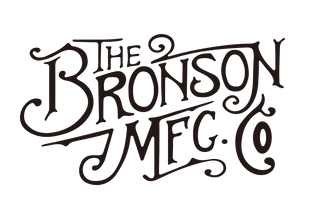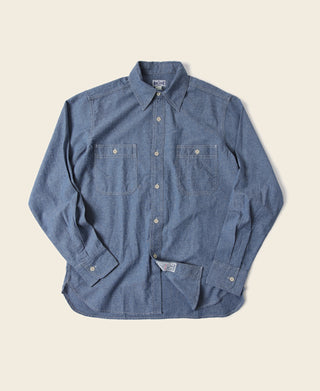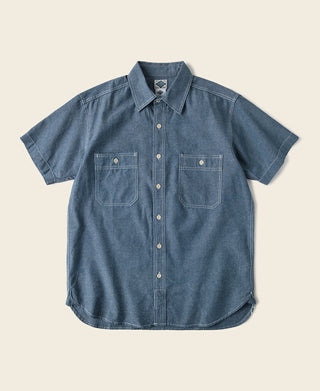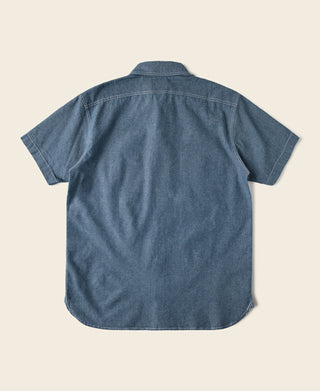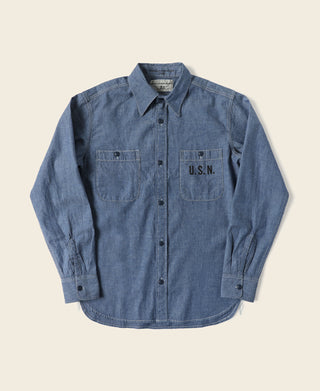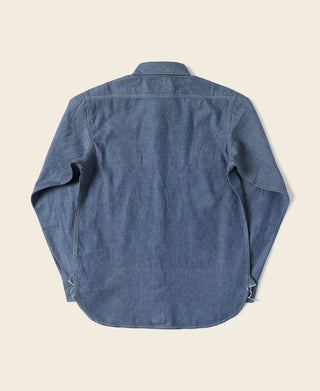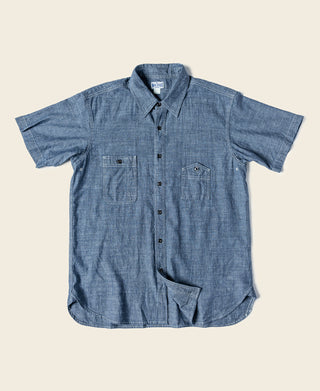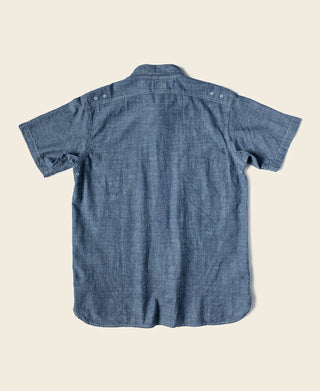Chambray: From French Looms to American Workwear
Chambray’s story begins not on the decks of warships but in the quiet textile mills of Cambrai, France, where the lightweight plain-weave fabric first emerged in the 16th century. Woven with colored warp threads and white weft threads, chambray displayed a distinctive soft blue hue that would later become its signature. Initially prized for fine linens and accessories in Europe, chambray made its way across the Atlantic in the 19th century, finding a new purpose in the American workwear tradition.

By the early 1900s, chambray shirts had become the uniform of American laborers. Its breathability and durability made it ideal for railroad workers, farmers, and factory hands alike. This simple blue shirt became so synonymous with manual labor that the term “blue collar” itself owes its origin to chambray’s widespread adoption among working-class Americans.

Wartime Utility: The WWII Navy Chambray Shirt
When the United States entered World War, chambray was drafted into service alongside millions of young men. Adopted as part of the U.S. Navy’s standard working uniform, the chambray shirt became a familiar sight from the shipyards of Norfolk to the Pacific Theater.

Early war-era shirts featured two main pocket styles: either baseball diamond-shaped or square pockets with flaps. Most were equipped with brown two-hole ‘cat’s eye’buttons. By around 1942, production shifted. The Navy adopted a simplified version of the shirt that would become standard for the remainder of the war. Key design updates included:
- Streamlined pocket design: The original chest pocket with a flap was replaced by a simplified, flapless version.
- Cat’s eye buttons: 1940s shirts used resin two-hole buttons, while post-1960s versions transitioned to a four-hole design for easier identification.

The chambray work shirt was a staple of the U.S. Navy uniform from 1901 through World War II. Typically, it featured a dark U.S. Navy emblem stamped above the left chest pocket, with some examples also bearing the sailor’s name or initials printed along the collar.
From Ship Decks to Shorelines: Chambray in Civilian Life
When the war ended in 1945, the Navy’s surplus uniforms—including piles of chambray shirts—entered the civilian market. Returning sailors often kept wearing them, bringing this utilitarian garment into everyday life.
By the 1960s and 70s, the chambray shirt had transcended its military roots to become a cultural staple. It appeared on college campuses, in folk music circles, and among those who appreciated its balance of simplicity and style.
The Cotton Chambray Work Shirt: A Faithful Revival
The Chambray Workwear honors a timeless wartime staple. Crafted from cotton inspired by WWII fabrics, each piece combines comfort, durability, and understated style. Flapless chest pockets, vintage cat’s eye buttons, and reinforced gussets reflect the functional simplicity of the originals.
Rooted in history yet versatile today, the Chambray series proves that utility and elegance never go out of style.
